Before Columbus and the illustrious class of 1500, many maps of the world showed Jerusalem as the center of the world. Jerusalem -- holy, treasured, and long fought after among the three great monotheistic religions -- has been destroyed and rebuilt 14 times. Its fabled walls are so strong that its defeats often came by starve-'em-out sieges.
The city's religious focal point is Temple Mount -- considered by many to be both the starting point or foundation stone of creation, and the closest place on earth to God in heaven. That's why Abraham came here to sacrifice his son, Isaac. The golden Dome of the Rock, one of the most sacred sights in Islam, marks its summit. For Muslims, this rock, which marks the Altar of Isaac, is the third most holy place in Islam. While the Muslims have worshipped here since around the mid-600s, the first Jewish temple was built in Jerusalem in 925 B.C. And when debating who most belongs in Jerusalem, many are quick to note that Jerusalem is mentioned 676 times in the Bible but not once in the Koran.
Local Christians like to believe that God is everywhere but all prayers go through Jerusalem (as if it's a cell-phone tower), and the Holy Spirit comes down to us via Jerusalem. I was told that there's a golden phone with direct connection to God at the Vatican. To make a call, it costs $1,000. And there's a golden phone offering the same service in Jerusalem, where the same call cost only 25 cents. When I asked why, I was told, "It's a local call."
People in Tel Aviv told me many don't like the religiosity of Jerusalem. "The cities have two different mindsets. The sea makes you open. There's no sea in Jerusalem and no beach. In Jerusalem, everybody is political, religious, or a tourist."
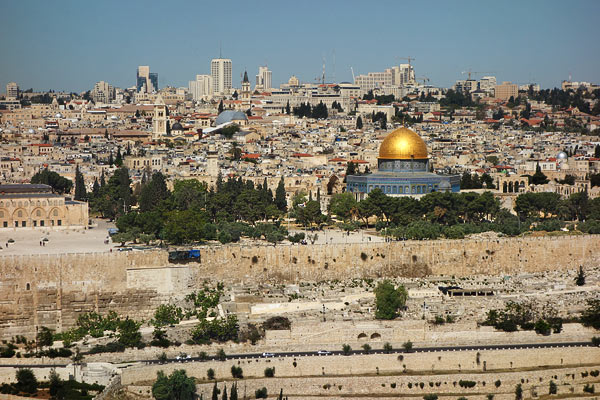
Enjoying the view from the Mount of Olives, you see the glittering golden Dome of the Rock, which marks the summit of Temple Mount -- holy to Jews, Christians, and Muslims alike.
Jerusalem has a tiny historic core. Its dense and complex "old town" is contained within a mighty two-mile-long Ottoman wall. The old city within the wall is divided into four distinct quarters: Armenian (with 2,000 people); Christian (with 6,000); Jewish (with 6,000); and Muslim (with 22,000 people).
The Jewish quarter of old Jerusalem was mostly destroyed between 1948 and 1967 -- its stones used as a quarry during the Muslim occupation. Since 1967 it eventually came back into Jewish hands. You can identify it by the new construction using creamy Jerusalem stone (of which the entire city is built) and by the lack of satellite dishes (though planners in the 1970s decided to bury cables for aesthetic reasons). About 90 percent of the old town Jews are Orthodox and don't watch TV.
The Western Wall, the holiest place on earth for Jews, wasn't designed to be that way. About 2,000 years ago, it was just the retaining wall that supported the main Jewish temple. When the Temple was destroyed in A.D. 70, the Jews went into exile. Over the centuries, throughout the diaspora, Jews returning to Jerusalem came here -- to all that was left of their temple -- to pray and mourn its destruction. That's why it is often called "The Wailing Wall."
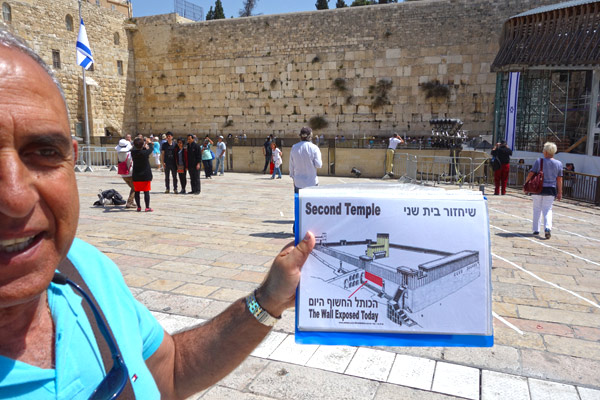
The sacred-to-Jews Western Wall is open to anyone, any time. My guide, Gideon Har-Hermon, illustrates with a chart the tiny segment of the original wall that survives today.
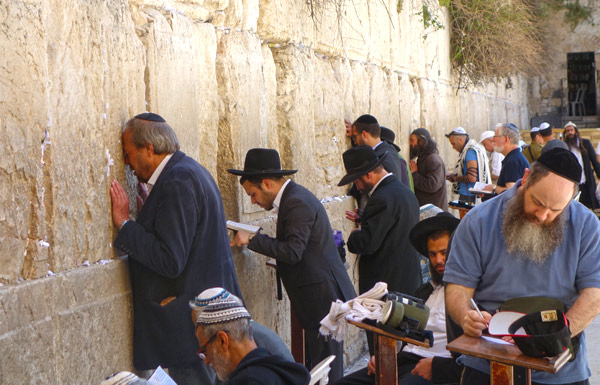
The Western Wall is divided into a men's section and a women's section. Jews place prayers printed on paper into cracks in the wall and bob repeatedly while they pray, as part of their ritual.
Today, of Jerusalem's 800,000 people, about two-thirds are Jewish and one-third are Arabs. And of the Arabs, 80 percent are Muslim and maybe 20 percent are Christian. The Arab Christian population of Israel and the Palestinian Territories goes back to the original fishers of men. The old town is fraught with endless little struggles. For example, the volume of call to prayer is turned up high, just to make a statement from Muslims and to annoy the Jews.
One of the most fascinating quarters of Jerusalem is Mea She'arim, the city's ultra-Orthodox neighborhood. Since its population takes the Shabbat (Saturday) very seriously, Friday is a huge day as all are busy preparing for their holy day of rest. Many Israelis see these most conservative of Jews as leaders of their faith. And many others see them in a negative way. One modern and secular local told me, "To these Hassidic Jews, I -- with my modern ways -- am the enemy. And to me, they are parasites. They don't work. Our taxes pay them to just sit around and learn the Torah. Their job is to be religious. They speak Yiddish because Hebrew is not for small talk. It's a holy language."
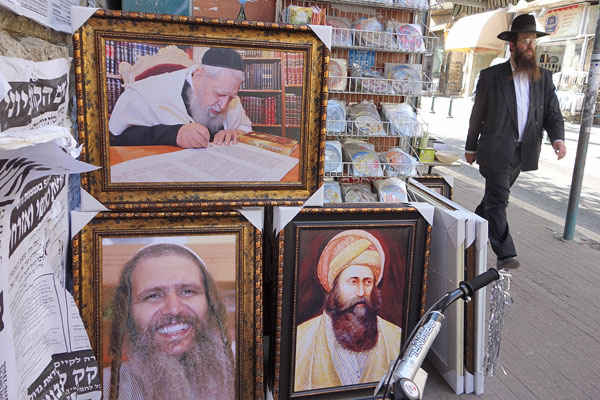
One of Jerusalem's most fascinating quarters is Mea She'arim, the city's ultra-Orthodox neighborhood. Kiosks sell posters of leading rabbis. Each rabbi has his own following, and the rabbi one follows influences how you live and dress.
Until 1948 Jerusalem was united. Then, after Israel won its independence, a green line divided the city, marking the border between Israel and Jordan, and giving Jordan control of the entire old city. Jews didn't even have access to their beloved Western Wall. Since 1967, the city is united again with all religions having access to their various sacred places in town. While the Green Line is gone as a political border, it survives as a cultural one with the Jordanian side being more Arab and Muslim, and the Israeli side more Jewish.
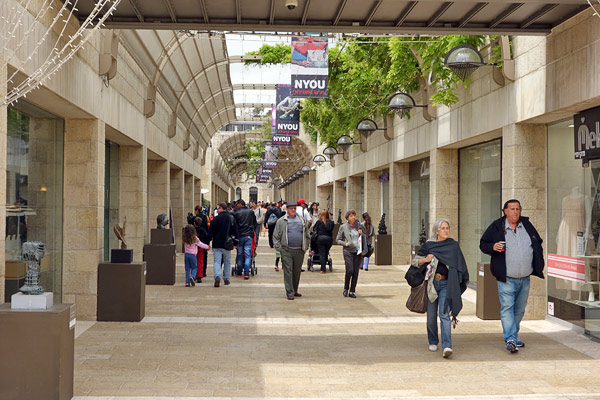
The Green Line was the battlefront in 1967, leaving lots of destruction. After Israel rebuilt the city, one stretch of what was the infamous Green Line is now a long, modern shopping boulevard called the Mamilla Mall.